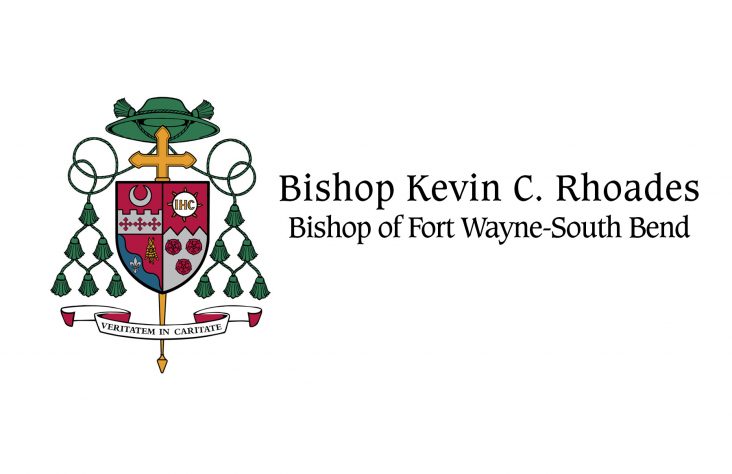April 1, 2014 // Uncategorized
The raising of Lazarus
In my last two columns, I reflected on the Sunday Gospels of the woman at the well and of the man born blind. These profound passages from Saint John’s Gospel have a baptismal perspective: Jesus promising living water to the Samaritan woman; and Jesus, the Light of the world, giving sight to the man born blind. This Sunday’s Gospel, again from Saint John, also has a baptismal significance. The raising of Lazarus from the dead points to our rising in faith to a new and eternal life through Baptism. Water, light, and life!
These Sundays of Lent form a stimulating baptismal journey since the first centuries of Christianity. These Gospels continue to be proclaimed and have particular meaning for our catechumens preparing for Baptism at the Easter Vigil. They have meaning for all of us as we strive, with the help of God’s grace, to live our baptismal promises.
We are all familiar with the miracle of Jesus raising his friend Lazarus from the dead. This story from the 11th chapter of John’s Gospel is frequently chosen for funeral Masses. It is good when we commend our deceased brothers and sisters to the Lord that we hear the words of Jesus to Lazarus’ sister Martha, words that give us comfort and hope: I am the resurrection and the life; whoever believes in me, even if he dies, will live, and everyone who lives and believes in me will never die.
We can only imagine the surprise, maybe even consternation, of those who heard Jesus say those words. Martha believed Jesus’ words. A short time later, all were able to see the truth of Jesus’ words when, at His command, Lazarus (who had already been in the tomb for four days) came forth alive. The truth of Jesus’ proclamation that He is the resurrection and the life would become even more apparent on Easter Sunday morning with His own resurrection, the final victory over evil and death.
The raising of Lazarus was a sign of Christ’s power over death. He is “the life” who pulls down that wall that can seem so impenetrable to us: the wall of death. It shows us Christ’s lordship over death. Christ gives us a trustworthy hope of life beyond death. We need Martha’s faith in the midst of the doubts and fears we might encounter in the face of tragedies, especially in the face of death. When Jesus asked Martha if she believed He was the resurrection and the life, she replied: Yes, Lord. I have come to believe that you are the Christ, the Son of God, the one who is coming into the world.
We express this faith in the resurrection in the beautiful prayer in the Roman Missal, part of the Preface at Funeral Masses: Lord, for your faithful people life is changed, not ended. When the body of our earthly dwelling lies in death, we gain an everlasting dwelling place in heaven.
While the Gospel of the raising of Lazarus shows Jesus’ power over physical death, it also points to Jesus’ power over spiritual death. In this vein, Saint Augustine saw the raising of Lazarus as a symbol of the sacrament of Penance. Just as burial clothes bound Lazarus, sin binds human beings. Jesus told the people to unbind the burial bands from Lazarus as he came forth from the tomb. So the Lord, through His priests, unbinds sinners from the chains of sin, from spiritual death in the sacrament of Penance. We truly experience new life, a kind of second Baptism, through this sacrament of God’s mercy.
Saint Augustine wrote in a homily on this Gospel: Everyone who sins, dies. Every man fears the death of the flesh, few the death of the soul. In regard to the death of the flesh, which without a doubt must someday come, all guard against its coming: that is the reason for their labors. Man, destined to die, labors to avert his dying; and yet man, destined to live in eternity does not labor to avoid sinning. Lent is a season that reminds us to labor to avoid sinning. This is the point of our Lenten penance and sacrifices: interior conversion.
It is our mission as Christians to proclaim that Jesus is the resurrection and the life. It means we live as a people of hope and that we spread that hope to others. Saint Peter wrote: Always be ready to give an explanation to anyone who asks you for a reason for your hope (1 Peter 3:15). Of course, that hope must first be real and personal, based on our encounter with Christ and His mercy, so that we can witness to the joy that arises from the gift of living hope we have received. This is the witness that evangelizes, the witness of joyful and hope-filled disciples of Jesus, those who believe that Jesus Christ is the resurrection and the life.
As we approach Holy Week, let us pray that our own faith may be strengthened, so that we, like Martha, can place all our hope in Him who is the resurrection and the life!
May the intercession of our Blessed Mother strengthen our faith and hope in her Son, especially in moments of trial and difficulty!
The best news. Delivered to your inbox.
Subscribe to our mailing list today.





